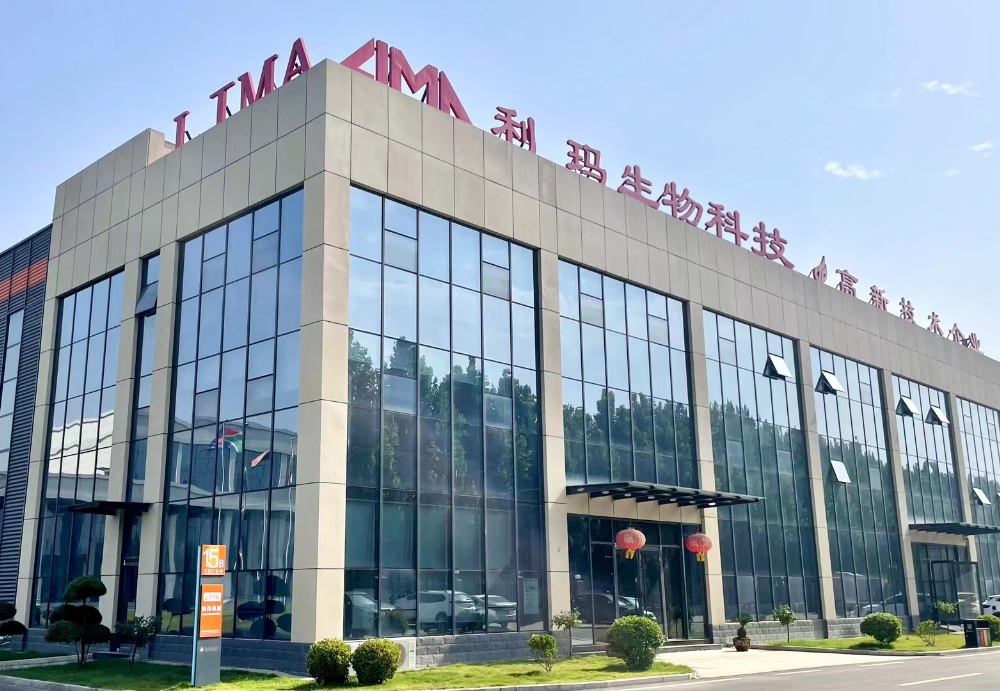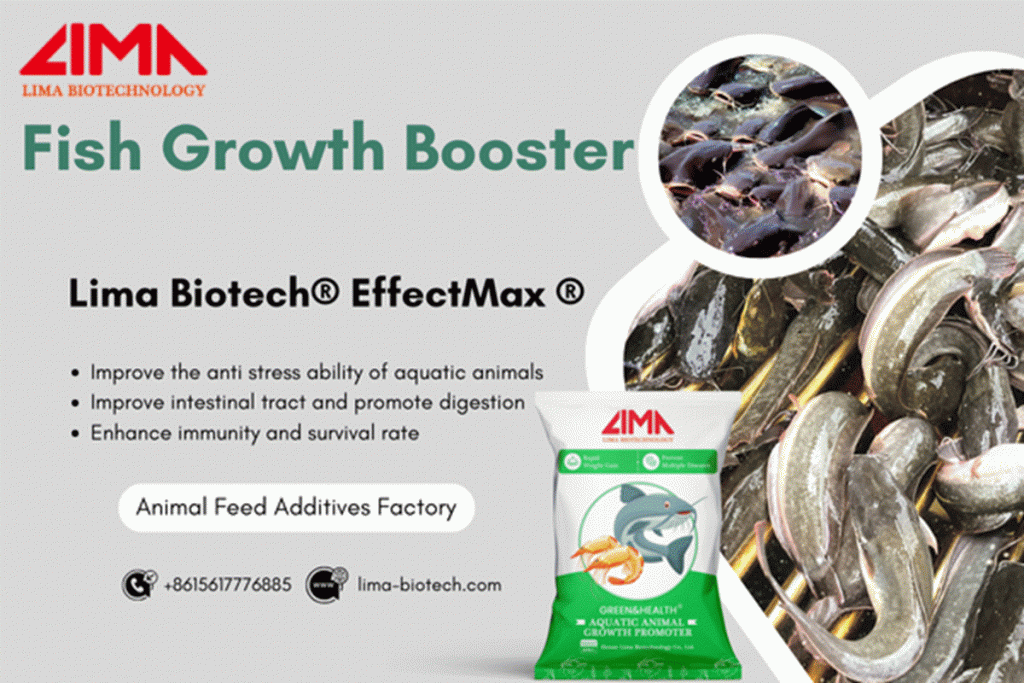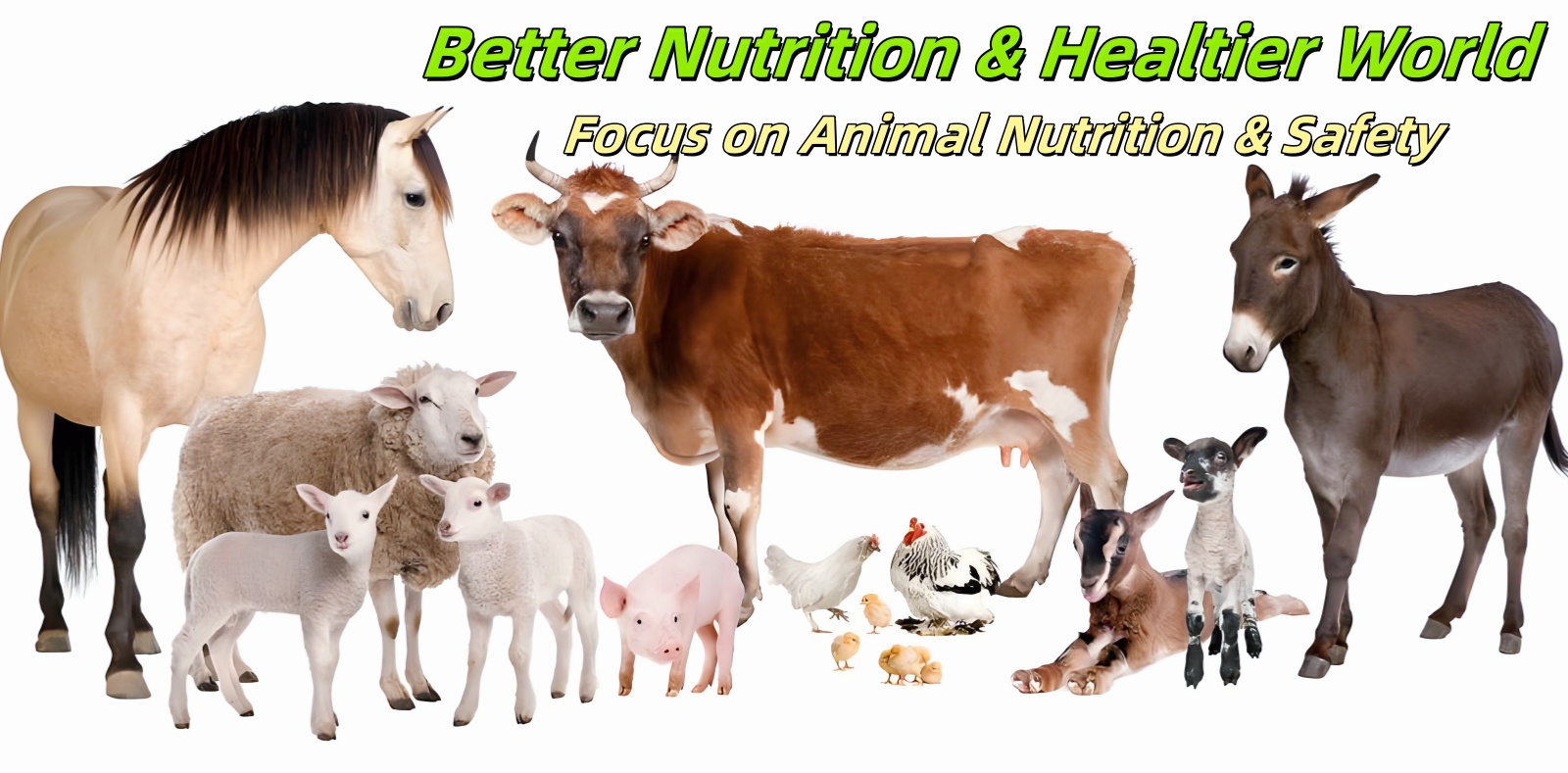For aquaculture farmers and ornamental fish enthusiasts, the growth rate of fish is a core indicator of farming success. Whether it is tilapia farmers focused on farming profits or catfish farmers hoping to reach market specifications as soon as possible, the rapid growth of fish is the result of the combined effects of high-quality nutrition, a suitable growth environment, and scientific efficiency-enhancing measures. Among these, high-quality feed plays a key role as a core source of nutrition.
What are the prerequisites for fast fish growth?
To ensure rapid growth in fish, it is essential to first ensure their living environment is suitable. Just as humans require a comfortable environment to grow healthily, fish growth is highly dependent on a stable living environment. If environmental conditions are inadequate, even with the provision of high-quality feed, growth rates will be significantly reduced.
How do water conditions affect fish growth?
Water quality is the primary factor influencing fish growth. Since fish live in water, the quality of the water directly impacts their metabolism, appetite, and immune system. High-quality water must meet three core criteria: first, ammonia nitrogen and nitrite levels must be strictly controlled, with ammonia nitrogen below 0.5 mg/L and nitrite below 0.1 mg/L. Excessive levels of these substances can impair gill function, leading to breathing difficulties and metabolic disorders, and in severe cases, directly inhibit growth; second, dissolved oxygen must be sufficient, with most farmed fish requiring dissolved oxygen levels above 5 mg/L. Oxygen deficiency can cause a sharp decline in appetite, resulting in stunted growth; Third, pH levels must be stable within an appropriate range. Freshwater fish thrive in a pH range of 6.5–8.5, while marine fish prefer 7.5–8.5. Significant pH fluctuations can trigger stress responses in fish, causing them to expend excessive energy adapting to environmental changes rather than growing.
In high-density aquaculture settings, water quality management is of utmost importance. Regular water changes, installing efficient filtration systems, and using water quality conditioners are all critical measures for maintaining water quality stability. By improving the microenvironment of the water body and reducing the accumulation of harmful substances, these measures create a more suitable growth environment for fish.
What’s the ideal stocking density for fast fish growth?
Fish exhibit a pronounced density-dependent growth inhibition phenomenon. When space is insufficient and density is too high, fish often fight over food and territory. Increased excretion accelerates the deterioration of water quality, ultimately leading to reduced growth rates. Different species of fish have significant differences in their spatial requirements. For example, tilapia can be farmed at a density of 10–15 fish per cubic meter of water, whereas larger catfish require a more spacious environment with a recommended density of no more than 8 fish per cubic meter. Reasonably planning stocking density to ensure each fish has sufficient space for activity and foraging is essential for achieving rapid growth.
How does temperature impact fish growth?
Temperature is a key factor in regulating the metabolic rate of fish, and each species has its optimal growth temperature. Within the optimal temperature range, fish exhibit vigorous metabolism, strong appetite, high nutrient absorption efficiency, and accelerated growth; however, if temperatures deviate significantly, growth will be inhibited even when fed high-quality feed. For example, tilapia, a tropical fish species, has an optimal growth temperature of 25–30°C. When water temperatures drop below 20°C, appetite decreases significantly. Catfish, while more adaptable to temperature fluctuations, grow most rapidly in water temperatures between 20–28°C. Therefore, depending on the species of fish being farmed, maintaining optimal temperatures through methods such as constructing greenhouses or adjusting water temperatures ensures rapid growth.
How does quality feed act as the core nutrition bank for fast fish growth?
Matching species needs for better growth
Different fish species have vastly different feeding habits and nutritional requirements. Even among farmed fish species such as tilapia and catfish, there are significant differences in their nutritional needs:
Tilapia is an omnivorous fish with a preference for plant-based foods, and its digestive system is better suited to digesting and absorbing plant-based proteins. High-quality tilapia feed should have a protein content of 25%-35%, with plant-based proteins such as soybean meal and rapeseed meal as the primary protein sources, supplemented with a small amount of fish meal to balance amino acid composition. Additionally, the feed should include an appropriate amount of crude fiber (such as bran or alfalfa meal) to regulate intestinal motility and enhance digestive efficiency. This nutritional ratio not only meets the rapid growth needs of tilapia but also reduces feed costs—after all, plant proteins offer much better cost-effectiveness than animal proteins, aligning with tilapia's biological characteristic of being able to thrive on coarse feed.
Catfish, on the other hand, are typical carnivorous fish. As bottom-dwelling predatory fish, their muscle growth and metabolism require a significant amount of animal protein. High-quality catfish feed must contain 40%-50% protein, with animal protein sources such as fish meal, shrimp meal, and silkworm pupae meal as the primary protein sources. These ingredients are rich in essential amino acids like lysine and methionine, which directly promote muscle cell synthesis. Additionally, catfish have higher fat requirements than tilapia, so feed should include 5%-8% fish oil or vegetable oil to provide energy reserves and the fatty acids necessary for growth.
How to identify quality fish feed?
Regardless of the type of fish, high-quality feed has a universal standard: the ingredient list must clearly indicate the primary nutritional sources and should not contain excessive additives or low-quality fillers. For example, high-quality tilapia feed will clearly specify the percentage of soybean meal and corn protein powder, while high-quality catfish feed will emphasize the addition of fish meal and fermented blood meal. Avoid using low-quality raw materials as substitutes for high-quality protein, as long-term feeding with such substitutes can lead to nutritional deficiencies and slow growth in fish.
Additionally, the processing methods used in high-quality feed are crucial. Pellet feed should be uniformly sized, have appropriate hardness, and not disintegrate easily when submerged in water. This helps reduce feed waste that pollutes water quality while ensuring fish receive complete nutrition during feeding. Only when the feed's basic nutrients precisely match the fish's dietary requirements can the foundation be laid for the subsequent use of Fast Fish Growth Supplement. Once the fish obtain sufficient basic nutrients from the feed, the growth promoter can enhance its efficacy, helping the fish population grow robustly.
Fish Growth Promoter for Sale
Based on high-quality feed and a suitable environment, the proper use of Natural fish growth promoter can significantly enhance fish growth rates. By regulating fish physiological functions and optimizing nutrient absorption through scientific methods, the goal of healthy growth is achieved.
Regulating intestinal microflora to enhance nutrient absorption efficiency
Fish intestinal health directly determines nutrient utilization efficiency, and beneficial bacterial communities within the intestine are key assistants in digestion and absorption. Natural fish growth promoters are rich in probiotics (such as lactobacilli and bacillus) that balance intestinal microflora: on one hand, probiotics competitively inhibit the proliferation of harmful bacteria, reducing the risk of intestinal inflammation and maintaining fish intestinal health; on the other hand, the vitamins, amino acids, and digestive enzymes produced by probiotic metabolism help fish more efficiently break down nutrients such as proteins and fats in feed, ensuring that ingested feed is truly converted into growth energy.
After adding Fish Growth Booster, which contains probiotics, to tilapia feed, feed utilization efficiency can be improved by 15%-20%; for catfish, muscle growth rates can increase by 10%-15% after using a similar product. This means that the same feeding amount can yield greater growth benefits while reducing feed waste and water pollution.
Enhance stress resistance and reduce growth obstacles
Fish inevitably face various stressors during the farming process: water temperature fluctuations, water quality changes, transportation stress, disease threats, etc. Under stress, fish secrete hormones such as cortisol, which suppress appetite and consume large amounts of energy, directly leading to growth stagnation. A high-quality fish growth stimulant can enhance stress resistance through two mechanisms: first, by leveraging the synergistic effects of amino acids and vitamins (such as lysine and vitamin C) to strengthen the fish's metabolic regulatory capabilities, enabling them to quickly adapt to environmental changes; Second, through its “liver-protecting and bile-promoting” functions, it reduces stress-induced damage to the liver—the liver is the core organ for metabolism and detoxification in fish, and a healthy liver ensures vigorous metabolism, thereby maintaining uninterrupted growth.
For tilapia and catfish, using a fish growth promoter during high-stress periods such as seasonal transitions or sudden weather changes can effectively reduce growth stagnation caused by stress, ensuring uninterrupted growth patterns.
Boost immunity and reduce the impact of disease
Disease is the biggest challenge to fish growth. Once an outbreak occurs, fish not only cease growing but may also face the risk of death. Natural fish growth promoters enhance immunity through multiple mechanisms: amino acids (such as methionine and threonine) serve as raw materials for antibody synthesis, vitamins (such as vitamin E and B vitamins) regulate immune cell activity, while probiotics improve intestinal barrier function to reduce the risk of pathogen invasion.
In tilapia farming, the use of growth promoters containing immune-enhancing components can reduce the incidence of common diseases such as gill rot and enteritis by 20%-30%; in catfish, resistance to pathogenic bacteria such as Edwardsiella tarda is significantly enhanced after use. Fish can achieve true rapid growth only when they continue to grow in a healthy state.
Why choose lima Natural fish growth promoter?
Enhance anti-stress ability and reduce mortality
Aquatic animals are often exposed to various stress factors such as water temperature fluctuations, environmental changes, and transportation disturbances. This growth promoter can effectively improve the anti-stress ability of aquatic animals, help them better adapt to environmental changes, reduce stress-induced growth stagnation and disease occurrence, thereby significantly lowering the mortality rate.
Improve intestinal function and promote digestion and absorption
The product is rich in probiotics, which can balance the intestinal flora of aquatic animals. By allowing beneficial bacteria to occupy a dominant position in the intestinal tract, it maintains a stable micro-ecological balance. This not only improves the intestinal environment but also promotes the digestion and absorption of feed nutrients, ensuring that aquatic animals can fully utilize the nutrients they ingest.
Strengthen immunity and increase survival rate
Containing amino acids, proteins, vitamins, and minerals, Lima Natural fish growth promoter provides essential nutrients for aquatic animals. These components work together to enhance the immune function of aquatic animals, improve their resistance to diseases, reduce the incidence of various diseases, and thus increase the overall survival rate of the aquatic population.
Purify water quality and create a healthy growth environment
In addition to its effects on aquatic animals themselves, this growth promoter also contributes to water quality purification. It can help reduce the accumulation of harmful substances in the water, maintain a good water ecological environment, provide a clean and stable living space for aquatic animals, and lay a solid foundation for their healthy growth.
Improve feed utilization and reduce breeding losses
By promoting digestion and absorption, the product effectively improves the utilization rate of feed. This means that under the same feeding amount, aquatic animals can obtain more nutrients, reducing the waste of feed. At the same time, it also lowers the cost caused by feed waste and the environmental pollution caused by residual feed, thereby reducing breeding losses.
FAQs:
How long does it take to see growth effects after using Natural Fish Growth Promoter?
Generally, noticeable changes can be observed after consistent use for 2–4 weeks: increased appetite in fish, more active behavior, and accelerated growth in body length or weight. Tilapia may show accelerated growth within about 2 weeks, while catfish, due to their slightly longer growth cycle, may require 3–4 weeks to see significant effects.
Can the Fast Fish Growth Supplement be used in combination with other feed additives?
In most cases, yes, but be mindful of dosage overlap. It is recommended to consult a professional or refer to the product instructions to avoid overloading water quality or causing metabolic stress in fish due to excessive addition.
Is the Fish Growth Booster worth the higher cost compared to regular feed?
Yes, it is worth the investment. Although the initial cost is slightly higher, natural growth promoters can improve feed utilization (reducing waste), lower mortality rates, and accelerate growth cycles. From a long-term farming perspective, the overall cost is actually lower. Taking tilapia farming as an example, the use of growth promoters can advance the time it takes for fish to reach market size by 15-20 days, thereby significantly reducing expenses such as electricity and labor costs during the farming cycle.
Is Fish Growth Booster suitable for all fish species?
It is suitable for the vast majority of freshwater and marine fish, including farmed fish (such as tilapia and catfish) and ornamental fish (such as koi and arowana). However, the appropriate product should be selected based on the fish species, and the recommended dosage should be followed to avoid indiscriminate use.


















